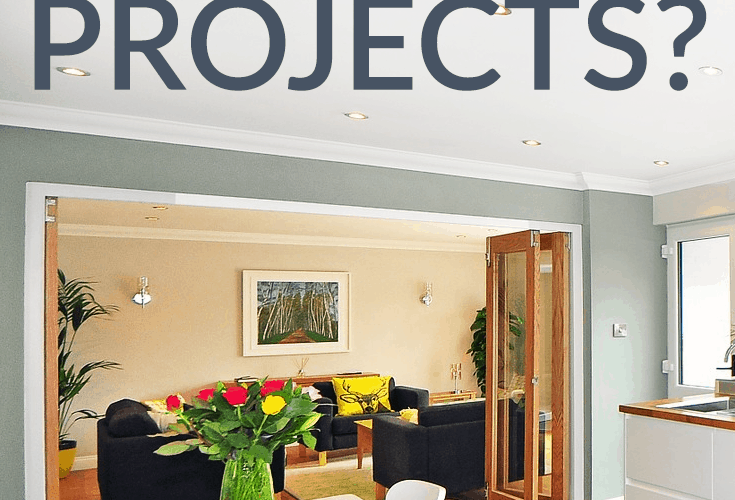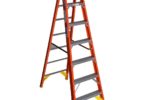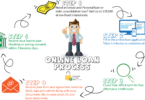There are many reasons why home improvements are made. Some improvements are made when a household’s size increases or decreases. Others are made as a person’s occupation, lifestyle and health conditions change. Some are made in order to increase or maintain the functionality or value of the property. There are also numerous home improvements made simply for the purpose of increasing the beauty of the home environment. Many of the improvements being made nowadays are to make homes more environmentally friendly and energy efficient. Whatever the purpose the improvements serve, knowing how to finance home improvement projects is essential.
Factors to consider
The best method of financing a home improvement project will vary from person to person and from project to project. There are numerous factors to consider when determining which method of payment is the best. The primary factor to consider is what the priority level of the project is. The project’s priority determines whether the financing is needed immediately or can be accrued more slowly. If the improvement is a necessity, then the financing must be arranged quickly. If the modification is by choice, then more time can be used for amassing the funding.
The next main factor is the individual’s financial status and budget. Does the individual have a good credit history and good credit score? If so, the individual will have a wider selection of lenders to borrow from, as well as better interest rates on any loans. The individual will also most likely be able to add the project into his or her budget more easily.
Other factors to consider are the complexity, cost, and type of home improvement being done. Will the project be very expensive or fairly inexpensive? Will the project require professional services or can they be done on a do-it-yourself basis? Will they require building and zoning permits, official inspections, or be tax deductible? These factors affect whether or not the project can be paid for with store cards, credit cards, personal bank loans, or personal loans from family and friends. They also determine an individual’s eligibility for grants and credit lines.
Methods of Financing
The methods of attaining financing can be as common as obtaining a loan or as unique as hosting a fundraiser. Here is a list of some methods of financing, and their pros and cons:
• Store cards, store credit lines: Pros – Is convenient, usually easily obtainable, and usually involves a delayed payment plan with no or low interest rates for a predetermined time. Cons – Is better for small purchases under $1,500, like appliances and do-it-yourself project materials. Will usually have a high interest rate applied if the balance isn’t paid off before the predetermined dat.
• Store Finance Programs: Pros – Covers larger projects, such as new flooring or kitchen cabinet installation. Retailer supplies the materials and contracted labor for the project. Frequently, no payment is due nor interest accrued until after the first 6 months. Usually these are unsecured loans, so they don’t require any collateral or any home equity. Cons – Usually requires a minimum purchase of $1,000. Normally, if the balance isn’t paid off in 6 months, a high interest rate is applied. Also, usually high-pressured sales techniques lead to purchasing more than was originally planned, making it easy to go over the budget.
• Home Equity Line of Credit: Pros – Is obtainable from most consumer banking institutions, and provides access to money in installments, as needed. The amount available is based on the built-up home equity, with a variable interest rate. The payments may be flexible and the interest can be tax deductible. Cons – Can only be established while the individual is gainfully employed, and requires using the home as collateral for the secured loan. Frequently, people are tempted to borrow more than they need specifically for home improvements, which then messes up their budget.
• Home Equity Loan: Pros – Sum borrowed is paid in a lump sum, and amount borrowed is based on amount of home equity that has been built-up. Has a fixed interest rate and fixed monthly payment plan, lasting several years. Cons – Is best suited for long-term, high-impact improvements, such as replacing the roof. This is a secured loan that requires the home to be used as collateral. The main portion of any payment goes towards paying off the loan fees, closing costs, and interest on the loan before it is applied to the actual loan balance. Usually requires having a fair to excellent credit score, with good credit history. Makes it very tempting to borrow more than what is actually needed for the home improvement project, so can mess up a budget.
• Home Improvement or Secured Personal Loan: Pro – Can be used to finance a major project, such as kitchen or bathroom remodeling, when there isn’t enough home equity to obtain a home equity loan or line of credit. The loan usually has fixed payments and a fixed interest rate, which are spread over several years. Cons – Should only be used for long-term, high impact improvements. These types are secured loans, usually requiring lots of collateral, and a fairly good credit score and credit history. The primary portion of any payment goes towards paying off the interest before being applied to the loan balance.
• Grants: Pros – Most grants do not need to be repaid, and can be for small or large projects. Cons – Grants are frequently hard to find, and have stringent requirements, such as a specific range of income, being a member of a specific group, meeting specific building codes, and requiring the use of professional contractors. Most government grants are given to various agencies, public organizations, and privately owned companies that act as administrators. Few government grants are given directly to an individual. However, there are other types of grants available besides just government issued ones.
• Savings: Pros – Using your savings doesn’t put you into debt, or add to the cost of the project. Can be used for small or major projects, can be do-it-yourself or professionally contracted improvements. Cons – May take longer to build up enough savings to finance any type of project. Once the savings are used up, it will take a long time to replenish the savings account. It’s a good idea to always leave at least a little bit left in the savings account so there will be some in case an emergency arises.
• Fundraising events: Pros – Fundraising events can be a fun way to earn money for home improvement projects. They add very little cost to the cost of the project. For instance, an individual could gather all the unwanted items that are cluttering the property and then hold a silent auction or rummage sale. Many relatives, friends, and neighbors may be willing to participate in such an event. Cons – Fundraisers are unpredictable ways of earning money, and so may take several events before enough money is earned to pay for just one small project.
More tips
Some other tips on financing home improvements include making certain that the cost of the project balances out the end value of the project. Use any available free financial calculator to help estimate the project’s cost. Consult with a financial planner, if possible. Consult with several real estate agents before diving into improvements to increase the property’s appeal and market value. Most of all, remember to comparison shop for the best deals on materials, contractors, and home improvement financing. It’s possible to make many improvements when a person knows how to how to finance home improvement projects.
<>






